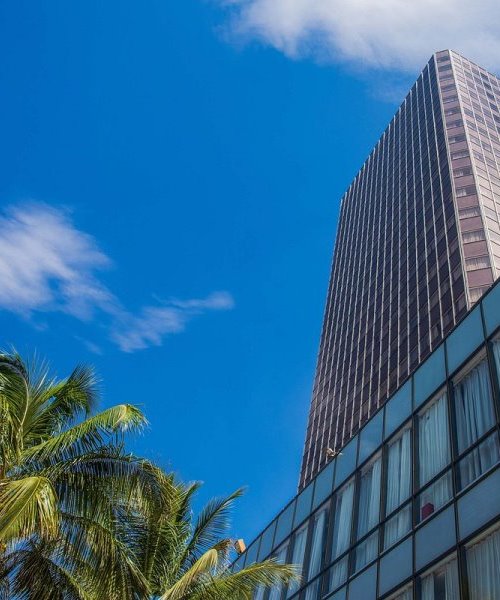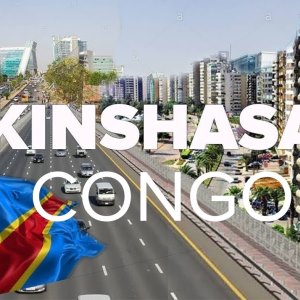Luxury Travel DR Congo
Africa’s second-largest country, the 2,344,858 square kilometers extends west from its border with Uganda, Rwanda, Burundi and Tanzania all the way to the distant Atlantic coastline. It is arguably the most biodiverse country in Africa, best known for the green swathes of rainforest associated with the vast Congo River Basin, but also home to the western slopes of the immense Ruwenzori and Virunga mountains, as well as several massive lakes.
Unfortunately, the Democratic Republic of Congo is also one of Africa’s most problematic countries, and much of it is undeveloped for tourism and practically off-limits following long decades of poor governance and civil war.
A discovery to the southeastern part of DR Congo through Lubumbashi, will lead you to Upemba and Kundelungu National Parks. These parks are rich in diversity of natural habitats that range from the gallery forests, highland steppe, miombo woodlands, savannah and wooded grasslands. The parks have numerous gorges, waterfalls, wetlands to rivers and escarpments. On the other hand, depressions are filled with more than 20 lakes that are strongholds for exceptional fish, plants, insects, wildlife and rare bird species that are worth exploring.
The the eastern border area with Rwanda and southern Uganda, where the astoundingly biodiverse Virunga National Park reopened to visitors in 2009 and has since attracted a steady trickle of tourism, albeit with a few interruptions due to sporadic outbreaks of fighting. Easily visited as a cross-border excursion from Rwanda or Uganda, Virunga is popular with adventurous budget-conscious travelers because gorilla-tracking permits are far cheaper than in neighboring countries, and more easily obtained at short notice. The park also boasts one truly unique attraction in the form of Mount Nyiragongo, whose active volcano stretching a kilometer-deep crater hems in the world’s largest lava lake.
The Experience
Carpeted by huge swaths of rainforest and punctuated by gushing rivers and smoking volcanoes, the Democratic Republic of Congo (DRC, formerly Zaire) is the ultimate African adventure. As much a geographical concept as a full-fledged nation, DRC has experienced one of the saddest chapters in modern history, suffering a brutal 20th century of colonial exploitation, authoritarian madness and what has been dubbed Africa’s first ‘world war’, which finally ended in 2003 with the rise of the Kabila political dynasty.
The Democratic Republic of the Congo (or, simply, DR Congo) – formerly known as Zaire – may not be the first place to spring to mind when you think of tourist destinations, but this beautiful Central African nation has really come into its own in recent years and offers fascinating vistas and gorgeous locations along the rushing Congo River and the eponymous Congo Rainforest – the second-largest in the world after the Amazon. The country’s national parks are the stuff of legend – 5 of them are UNESCO World Heritage Sites – and to the east lie the African Great Lakes, natural wonders in of themselves.
- Hike to the summit of Nyiragongo Volcano and spend a night on the rim, looking down into the world’s most active lava lake – and dine out on the story for the rest of your life!
- Track mountain gorillas through the thick forest of the Virunga Mountains
- Explore the delightfully laid back island of Idjwi on Lake Kivu
- Hike through the highlands of Masisi, accompanied by throngs of curious children
- Haggle for excellent African artwork and masks in the markets
- Navigate the Congo River, one of the world’s largest rivers. First explored by Henry Stanley Morton during his fateful expedition through the continent.
- A discovery to the southeastern part of DR Congo through Lubumbashi, will lead you to Upemba and Kundelungu National Parks. These parks are rich in diversity of natural habitats that range from the gallery forests, highland steppe, miombo woodlands, savannah and wooded grasslands. The parks have numerous gorges, waterfalls, wetlands to rivers and escarpments. On the other hand, depressions are filled with more than 20 lakes that are strongholds for exceptional fish, plants, insects, wildlife and rare bird species that are worth exploring.
- The Congo forests compete with the Amazon for being the lungs of the planet, still largely impenetrable and home to species such as gorilla, chimpanzee, okapi and forest elephant. Its eastern mountains, along the borders with Uganda and Rwanda, offer superb trekking opportunities well off the beaten track.
- Culture – The Democratic Republic of Congo is home to a bewildering number of different ethnic groups, each with their own language, but the official language is French. The key ethnic groups here are the Mongo, Luba, Kongo and Mangbetu. but there are around 250 different groups, including Hout, Tutsi, and the Mbuto pygmies of the deep forests
Why you’ll love it
The Democratic republic of Congo is mysterious and complicated, unexplored and diverse, and has a spirit of adventure that will put even the most adventurous traveler through their paces – and that’s definitely why it’s one among our key destinations.
Something to think about
DRC is not without its problems and (we won’t beat around the bush) it’s a complex area to travel in. But if you’re organized, plan well and don’t leave anything to chance, the country can be more rewarding than almost any other on the continent.
Accommodation
Oluokos Signature, will only send you to the most beautiful and unique accommodations in the heart of DR Congo. They are not only run by excellent staff, they also give back to the local communities and operate as ecofriendly as possible.
Our selected accommodation facilities are located in the most beautiful areas, and we believe that they will contribute to your ultimate safari experience.
From the charming city hotels to the rustic tented safari camps in the wildlife and community areas and without forgetting the luxury boutique hotels in DR Congo. We will make sure they tick all the boxes positively!
All accommodations facilities have been carefully handpicked only, after meeting our minimum selection criteria and they have good value for money, local community support and also compliments the rich African experience.
Astounding Wildlife
Not known to many, the Democratic Republic of Congo is one of the emerging finest luxury eco-tourism holiday destinations in Africa. The country is home to a quarter of the world’s mountain Gorilla population.
Trek through the Congo’s rainforests alongside experts as you go in search of Gorillas, in a plight to help aid in the care and protection of these mesmeric creatures. Catch a ferry down on Lake Kivu, one of East Africa’s greatest lakes or a helicopter over awe-inspiring hills and plains. Hike the world’s largest volcano lake and camp around its crater, waking up to breath-taking views.
DR Congo has about 11,000 plant species, including 3,200 endemic plants, representing about 43% of the medicinal plants on the planet; 480 species of mammals; 1,090 species of birds; 1,600 species of fish; 350 species of reptiles; 220 species of amphibians and several tens of thousands of species of insects.
Many of these species are rare, present only in Congo and sometimes in specific territories, which therefore makes them fragile species. Not to mention the many (micro) plant and animal species still unknown to science to this day.
Big Game, Culture, Gorillas and Birds
DR Congo has a vast choice of attractions for the discerning intrepid traveler. This range from the vastness of the urban Kinshasa, with its high-end hotels and restaurants, to smaller but equally attractive cities like Goma in the east.
Consider the fact that much of Africa’s most popular music comes from the DR Congo, there’s plenty of proof that the DR Congo isn’t only for nature lovers but also offers an abundance of cultural experiences to immerse oneself in.
The DR Congo’s jungles, savannas, forests, swamps, rivers, the beaches on the Atlantic Ocean and the foothills of the volcanic peaks are famous for their primate population, including the endemic eastern lowland gorilla, as well as okapi, giraffe and elephant, lions, over 1000 fish species, and the forests offer an abundance of birdlife more can’t be compared with any other country in Africa. DR Congo, is indeed a country filled with so much surprises.
Beach and Wildlife
DR Congo has a vast choice of attractions for the discerning intrepid traveler. This range from the vastness of the urban Kinshasa, with its high-end hotels and restaurants, to smaller but equally attractive cities like Goma in the east.
Consider the fact that much of Africa’s most popular music comes from the DR Congo, there’s plenty of proof that the DR Congo isn’t only for nature lovers but also offers an abundance of cultural experiences to immerse oneself in.
The DR Congo’s jungles, savannas, forests, swamps, rivers, the beaches on the Atlantic Ocean and the foothills of the volcanic peaks are famous for their primate population. The list includes the endemic eastern lowland gorilla, as well as okapi, giraffe and elephant, lions, over 1000 fish species.
In the DR Congo’s forests, savanna plains, gardens, swamps, river estuaries and the miombo woodlands; birds exist in abundance. With 1,189 species of birds more than any country in Africa. DR Congo, is indeed a country filled with so much surprises.
When to Go
The weather patterns in the DR Congo differ hugely across the vast country, If you are a lover of long summer days, beautiful sunsets and perfect tanning weather, then DR Congo is most definitely an ideal destination for your next holiday. Located right on the equator, the Republic of Congo is well-known for its tropical weather all year round.
Depending on your itinerary, you can expect throughout your holiday. There’s still a small chance of rain at this time of year but the temperatures are pleasant making for enjoyable gorilla trekking. If you’re climbing Mount Nyiragongo, be prepared to get a little chilly at the top however!
January, February and March are also good times for gorilla trekking, as there’s a short break in the rains but prepare for heat and humidity. Virunga is accessible all year round, just remember that during the rains November & December; April & May the hiking becomes harder and the humidity rises. Due to its vast size, we will be keeping you posted about the DR Congo weather.


